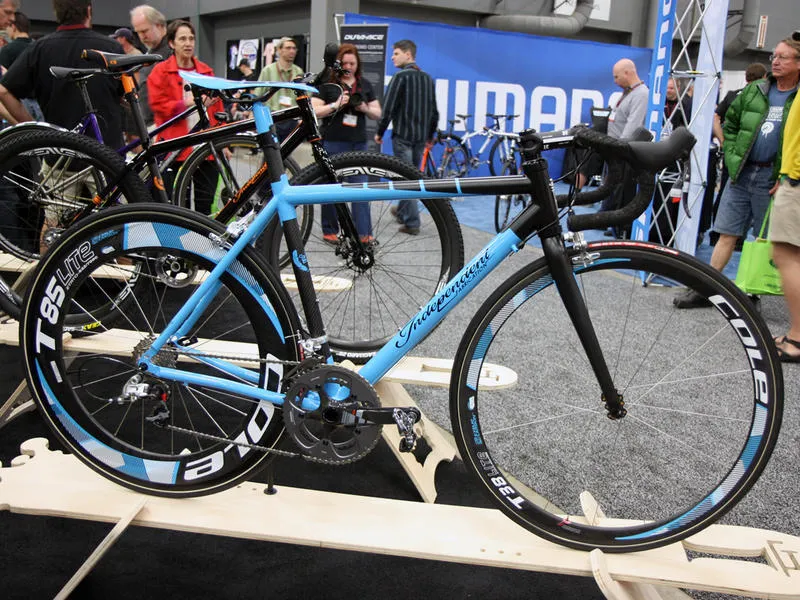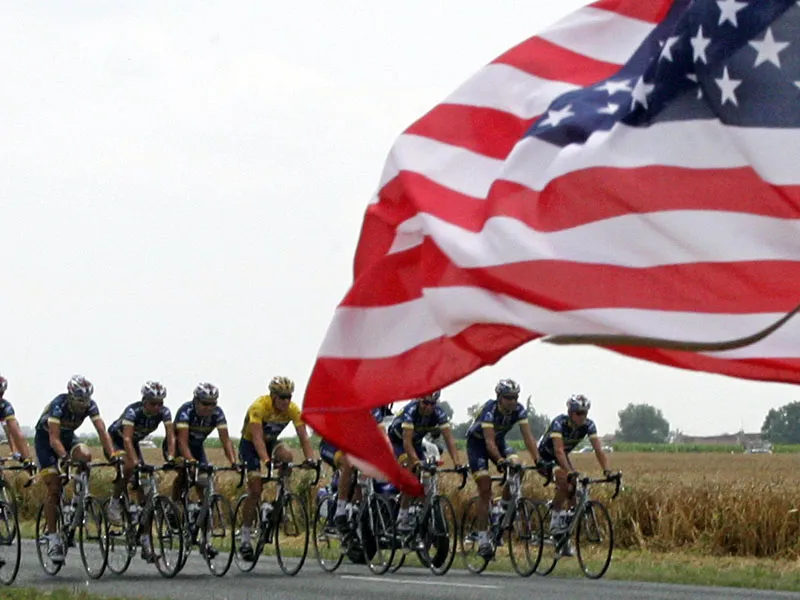Cycling in the United States has had its ups and downs over the past decade, with Lance Armstrong's success on the world stage helping to drive massive growth before economic uncertainty put the brakes on. In this two-part feature BikeRadar's US editor, Matt Pacocha, examines the current state of the American bike industry and asks what the future holds.
Road bikes: Strong segment, but is it a bubble?
Lance Armstrong’s second coming – and leaving – is over and done, and it appears the Texan had his greatest effect on the retail market the first time around. (The number of road bikes sold in the US more than doubled between 2002 and 2004, with his sponsors Trek in particular benefiting hugely.)
Marc Sani, publisher of Bicycle Retailer and Industry News, the leading trade publication in the US, says overall bike sales are likely to be flat this year. However, road bikes are selling well, especially in the $1,600-$2,300 range.
Sani attributes this to the popularity of long-distance charity rides and enthusiasts upgrading to mid-range carbon bikes. “The interesting thing is the pricepoint at which these bikes are selling,” he says. “[These] are your basic [Shimano] 105 or [SRAM] Rival equipped bikes. This segment at this pricepoint is very strong.”
Shimano’s new electronic Ultegra Di2 group could drive sales in this category even higher, Sani believes, in both number and value. “If Shimano can meet demand we could see another spike, which could move the price up a little bit,” he says. “I know everyone and his brother will have a 2012 Ultegra Di2 bike in their line; the question is can they [Shimano] deliver?”

Shimano's new electronic groupset, Ultegra Di2, could encourage riders with mid-range bikes to upgrade
Some, however, paint a bleaker picture of the health of the US cycling industry, pointing out that while the market is flat, unit numbers (bikes being sold) are down. In other words, people are buying fewer bikes but paying more for them.
Jay Townley, a partner at Gluskin-Townley Group, a market research firm that's contracted to provide the NBDA (National Bicycle Dealers Association) with annual dealer and market overviews, says figures from the US Department of Commerce show bicycle import unit numbers are down 4.5% but the value of those imports is up roughly 6% in wholesale. He fears this could be a red flag signifying a market bubble.
"What happened in 2010 is that the prices and value of bikes went up,” says Townley. “The bottom line is, yes, the FOB (Freight on Board) value and CIF (Cost, Insurance, Freight) value by category has steadily increased – 2008, 2009, 2010, through the year to date. However, 2011 units are down.”
Many in the industry insist it's value that counts, not units, and that price increases are passing through to consumers without push-back. But push-back may be coming. According to separate but concordant research by the Gluskin-Townley Group and Leisure Trends, there's now a significant used bike market (close to 30%) in the US that spans all income levels of adult bike purchases, but most importantly the enthusiast category, signifying lost sales at retail.
Townley attrributes the growth of second-hand sales to the soft economy. Research by the Gluskin-Townley Group suggests a used bike has no negative connotation among enthusiasts – in other words, the brand cachet of a Cervelo, for example, is the same whether bought new or used. This, added to the fact that new bike costs have increased at a higher percentage than the US inflation rate, throws more flags.
Pair all of this with a surge in handcrafted bike numbers from small manufacturers around the US, that together make up a larger percentage of the market than any single ‘major’ brand, and you’ve got a real issue for the big players – Cannondale, Giant, Trek and Specialized. “You’ve got over 100 hand builders that are surviving today along with the boutique brands,” says Townley. “I think what this says is that the specialty retailer will do fine; the specialty bike shops have real room to grow."

Sales of boutique and handmade bikes are strong in the US, and the second-hand market is also booming
"The US market is now deemed to be flat by the major players," he continues. "So what they’re doing is chasing Europe and, more importantly, the developing countries in Asia. Virtually all of the major brands in the US, no matter where [their bikes] are made, are chasing business in Europe and Asia because there’s no growth here for them. They think the growth is going to come out of foreign markets.”
This new focus on overseas markets could affect supply in the US in the second half of 2011 and into 2012, Townley warns. "They got the inventory wrong this year [too many bikes] and the brands are desperately trying to control it by cutting import, ” he says. “They’re in the bottom quarter of historical import numbers, in the absolute highest year for total FOB [freight on board] unit value.”
Townley says bikes that cost $2,000 and above are already clogging up in the distribution channel. “They have to clear it," he says. "And they’re going to change supply. The second half [of the year] will tell the tale. Analysts, like me, are afraid they’re forcing a price bubble."
So, is the US bike industry in trouble? “[The road bike market] looks good but there are these underlying issues that need to be looked at," says Townley. "There's no bike boom and we’re not in a growth mode."
Ultimately, it may all come down to the weather – historically one of the most important factors in the health of the US bike industry. “If it rains or it’s cold, too windy or too hot, people typically don’t go into their local bike store on the weekend. This industry is far more weather dependent than people want to give it credit for," says Sani. "[And this year] we've had really quite erratic weather in almost every region of the country, nobody seems to have been exempt.”
In part two of this article, to be published on Thursday, we'll be looking at the US mountain bike market, where the 29er is still hot and riders increasingly seem to be building bike 'quivers', along with the urban sector.
